Navigating the Music Library Part III: Playlists
Playlists were the one area when using innuOS 1.x that we were never happy with. Since we depended on the behaviour of the underlying Logitech Media Server, playlists could not be edited individually. Let’s say we had a playlist named “Workout”. You were listening to music and came across a really nice track to add to that playlist. Using innuOS 1.x, you add to load the playlist into the queue, add the track you were listening and then save again under the same name. It’s just too much trouble for something that should be pretty much a 2-click operation.
With innuOS 2.0, we have now implemented from scratch a completely new Playlist engine that will let us overcome these limitations and then more…
Quickly create Playlists and Add Tracks
One of the first objectives with our new Playlist engine was the ability to quickly add a track to a Playlist from pretty much anywhere so that even if you’re using the app and suddenly listen to a track you love for a playlist you were planning, you can add it with one click from the Mini Player always present on the app. Looking at your Played Tracks History and found something – you can add to playlist there. Searched for an album and would like to add it from the Search Results? Yes, you can add it there too. This includes both local music and music from streaming services!
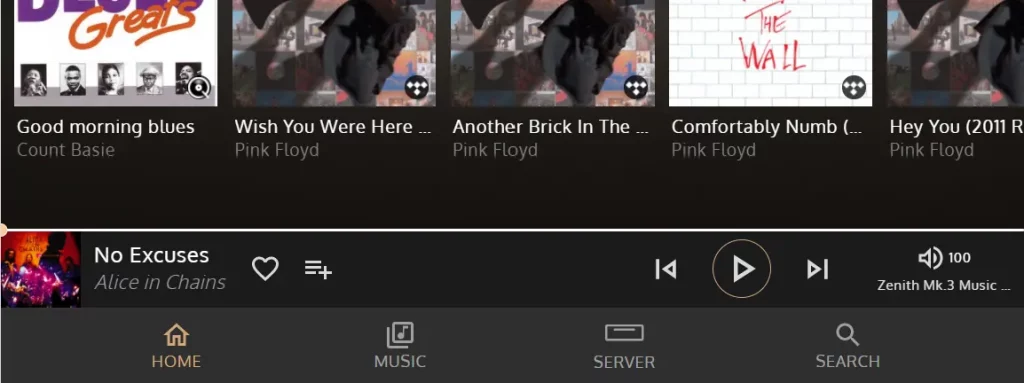
So now that you can select an album or track to add to a playlist, we wanted to make it really easy to either select a playlist to add the music or enable you to create a new playlist right there and then. Here’s how the Add to Playlist dialog looks like:

As you can see, on top you have a “+ New” button that enables you to create a new playlist and automatically add the music to that playlist. You can also search for a playlist but in most cases, the list of the last 5 playlists edited will be just a click away making this step a breeze. We believe this will be a true enabler so that we can build our own playlists tailored exactly to what we want rather than just be reliant on playlists curated by someone else.
Playlists Home
The new Playlists page will allow to browse, search, edit, filter and play all your playlists, whether they are created on innuOS or created in compatible streaming services (Qobuz only for the moment).
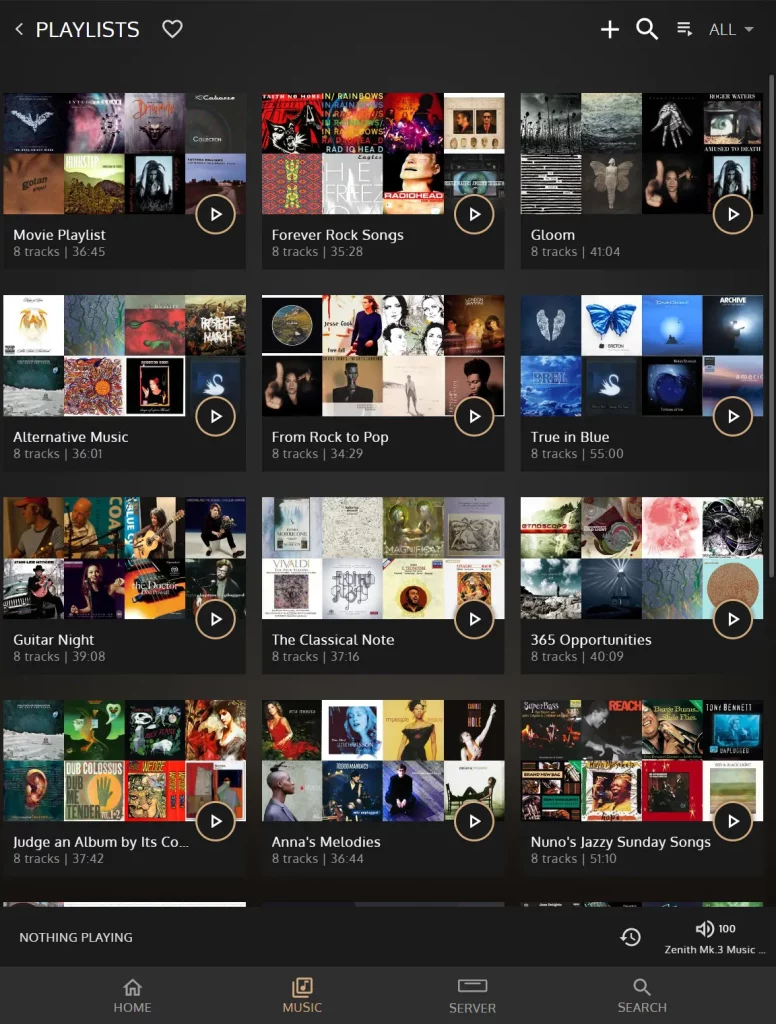
You can now create empty playlists to have ready to populate when you listen to music or specifically search for tracks. You can provide a name but also a description for the playlist that will allow you to better describe what the playlist is about, where/how it was created, etc.

There’s also a specific search for playlists that search for playlists title, description and tracks within a playlist. The description being searchable makes it particularly powerful. Let’s say you write “Created by my other half” on the description of playlists, you could easily filter all playlists created by your other half. Possibilities are limitless here.

Additionally you can filter the playlists by your Favorite playlists and also between locally created playlists and playlists imported from compatible streaming services.

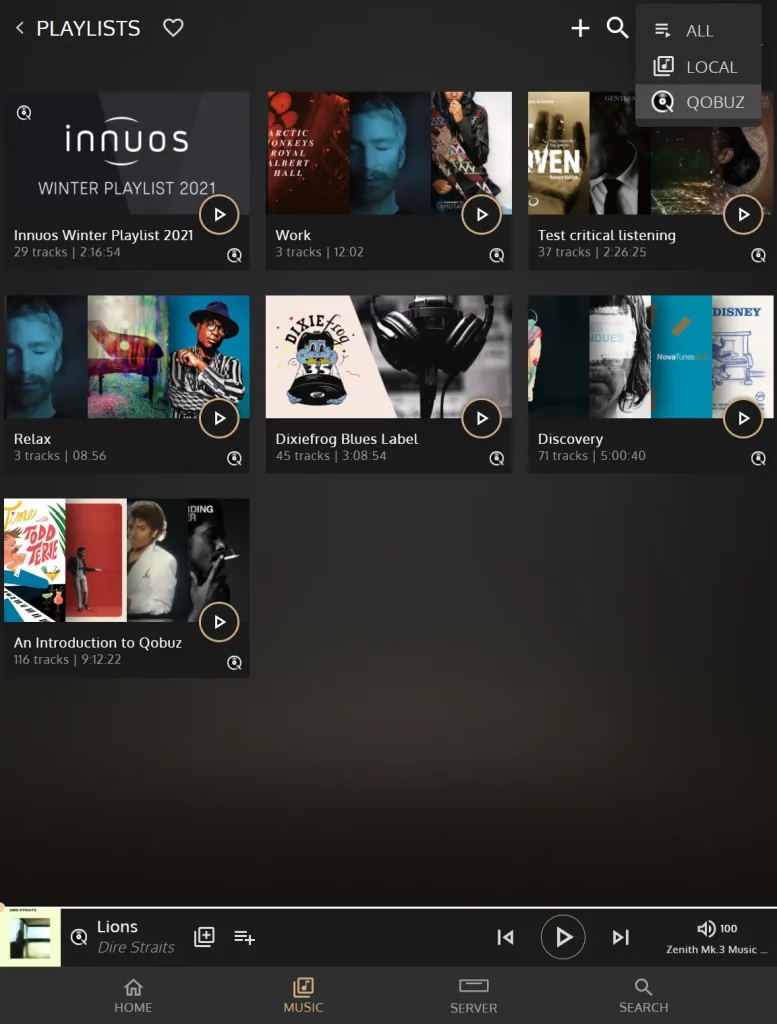
Playing and Editing Playlists
Going into the playlist itself will show you the description and track list for your playlists. There’s 3 modes of playing the playlist:
- Play – Adds the entire playlist to the queue as per playlist order
- Shuffle – Adds the playlist shuffled to the queue
- Click on track – Starts playing the playlist from that track
There’s a visual play indication on the playlist so if you just want to explore tracks on the playlist, you can do that on this screen rather than adding to the queue. This allows much clearer visibility of the tracks being played with the playlist.

Of course you can now edit the playlist itself, where you can change the name, description, track order and remove tracks. A simple drag and drop interface will allow you to do this easily.

Another new feature is the ability to copy and move tracks to another playlist. A concept we particularly like is the “Watchlist” playlist. This can act like a shopping cart for your music. Whenever a track you’re playing sounds interesting, just add it to the Watchlist. You can later review this playlist and then copy and move from this playlist to other playlists. Of course, you can also use this for your own management. Do you music on your “Focus” playlist and want to copy it to your “Workout” playlist? A couple of clicks gets you there.
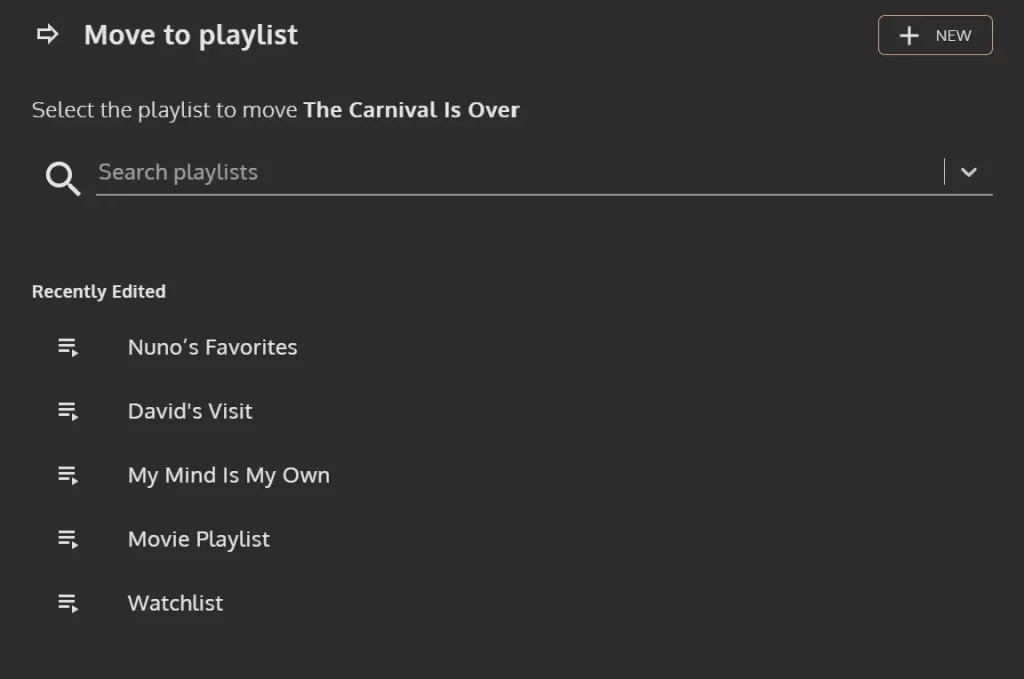
Export Playlists
You can also now export a playlist to a USB stick. This will export all the local files (streaming services will be excluded) to a folder with the playlist name containing your files and a playlist (m3u). This will work great if you’d like to export some music to listen on your car – m3u files are standard and should be recognised by most car audio systems. Make sure your USB stick is formatted in FAT32 for the best compatibility. We will be expanding the scope to export playlists in future updates – lots of exciting ideas in this area!

Further Playlist integration
Playlists are an important concept with innuOS 2.0 and we decided to further integrate into the OS so they are easy to access. One such way is through Global Search – if you search for a track name or artist, it will provide results with playlists containing that track or artist too.
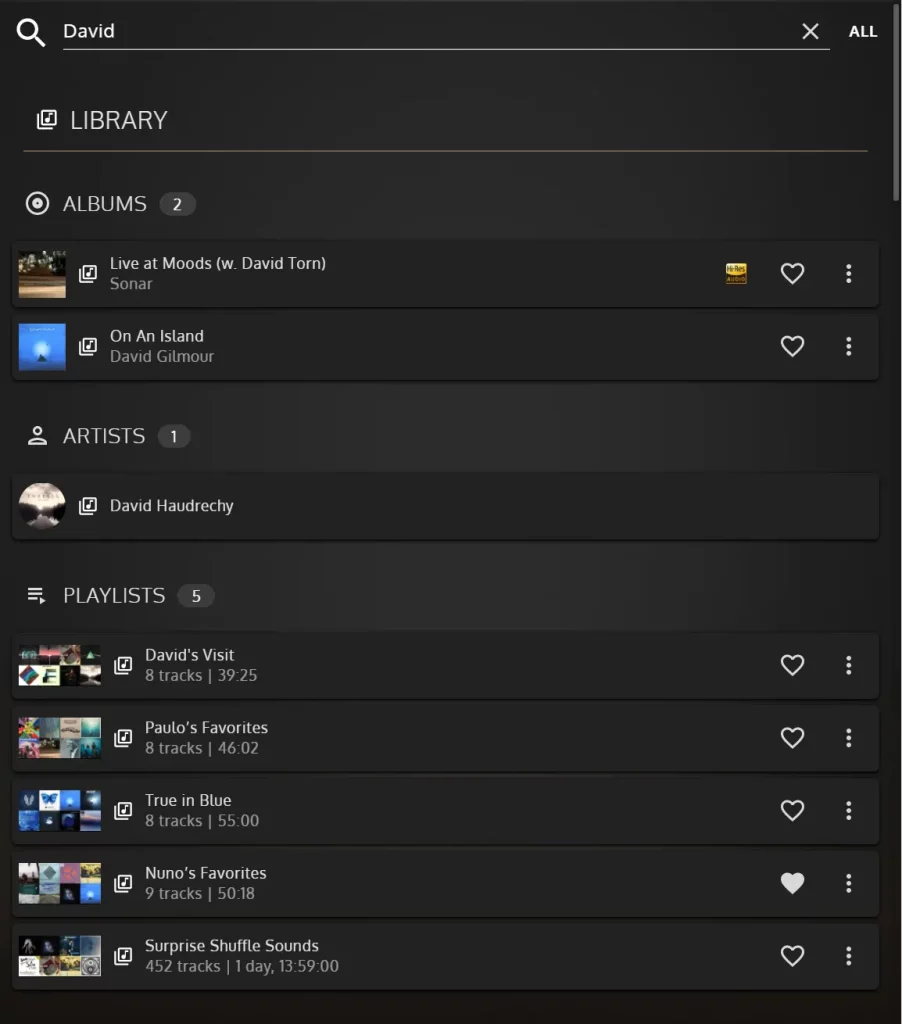
The other essential feature for playlists is to make them independent from where they are in your file folders. Normal playlists are basically lists of file paths. This means if you move the files around, your playlists will be missing those files. innuOS 2.0 now created unique ids for each track so that even if the track is moved around to a different folder, your playlists will be kept up to date and will play normally. Even if you delete the files from your server and import them again, the playlists will automatically connect to those files so that you never miss your playlists!
Home Widgets
And finally, so that you can access your preferred playlists with one click, we’ve added a couple of widgets you can place on the Home page:
- Most Played Playlists
- Favorite Playlists
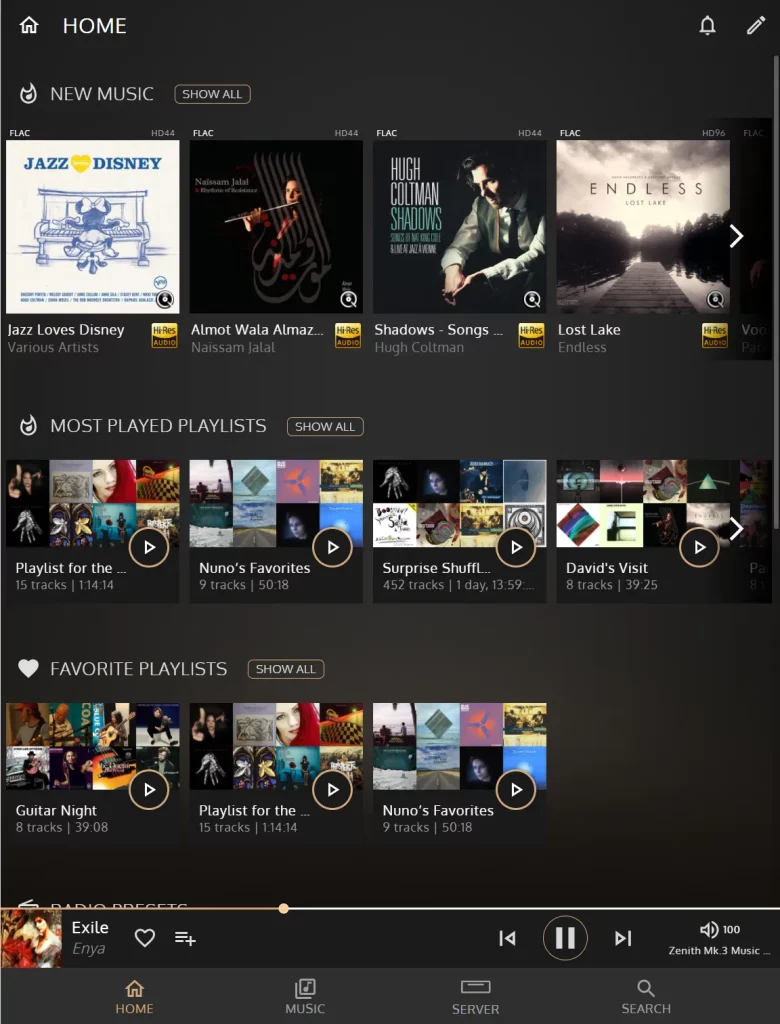
Your Questions Answered
Not a lot of questions this week so hopefully this means our blog is being comprehensive in showing what innuOS 2.0 is all about!
Here are this week’s questions:
It would be nice to be able to specify the max. size of the exported file, or to have an indication of the playlist size, as it is annoying to try to get the “Drive full” error message when we export a music set.
This is a good idea and we’ll certainly explore this with the team. Thanks for the feedback!
Update from the team: innuOS already detects if the drive has enough space or not for the playlist. If it doesn’t, it will warn the user and if the user confirms, files will be copied until drive is full.
Great!! and something about booklets? Many times are available on Qobuz so far not so easy to find… or booklets inside my imported album are practically inaccessible.
This is something we have in mind for some time now to develop but not for app launch. It will come as a future update.
I am using Roon in the experimental squeezelite mode, what will happen with this option in 2.0?
The experimental squeezelite mode remains the same in innuOS 2.0 as well as the implementation. You can see below a list of options to run Roon, which are the same as innuOS 1.x.
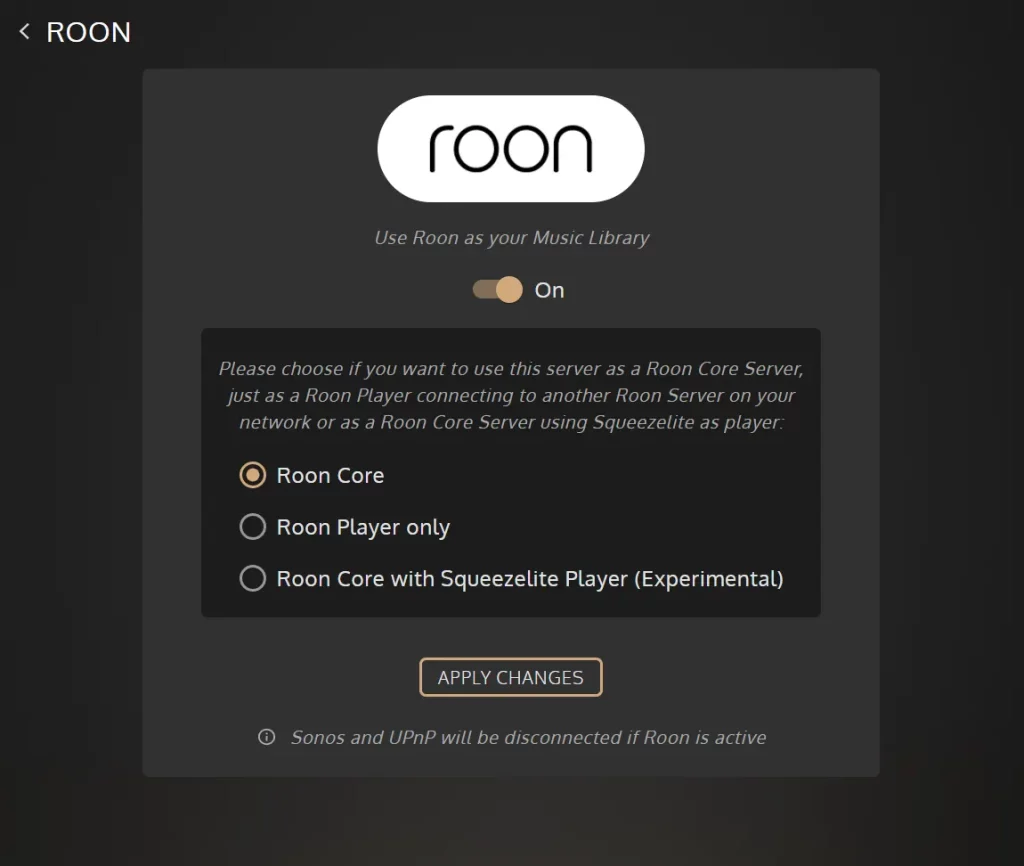
That’s all for this week. Next week we’ll show you how exploring streaming services content works with innuOS 2.0. Have a great weekend and stay safe!
Nuno Vitorino

